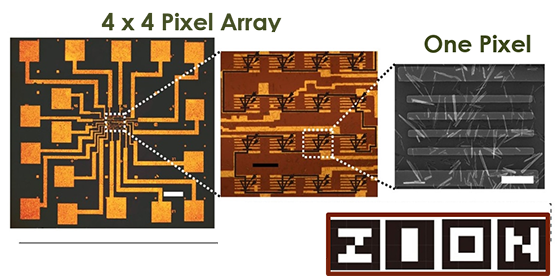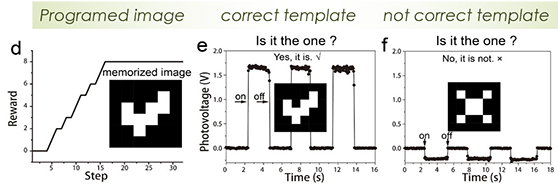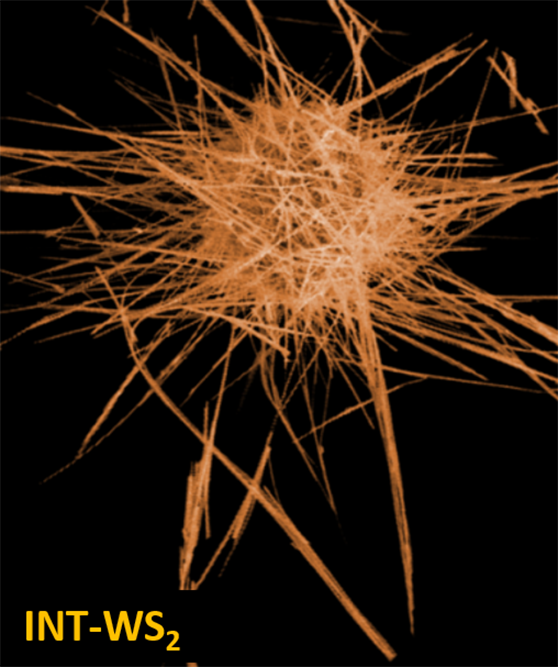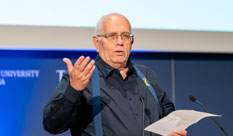More:
News & Stories
A new application of ferroelectricity: An advanced full functional artificial vision system
Ferroelectricity—the spontaneous polarization of a material that can be reversed by the application of an external electrical field—is among the most preferred strategies to achieve the coveted property of memory in electronic devices.

figure 1
A century after its discovery, ferroelectricity holds the potential to provide the solution to the current memory challenges of electronics for the artificial intelligence era.
In their exploration of new forms of ferroelectricity, Prof. Alla Zak, Dean of the Faculty of Sciences and Head of the Laboratory for Synthesis and Investigation of Nanomaterials at HIT, together with research colleagues in Israel and China, uncovered a new form of ferroelectricity known as sliding ferroelectricity. Sliding ferroelectricity is an unconventional form of ferroelectricity, discovered only six years ago (2017) using theoretical calculations, which has been found to be very useful in numerous applications.
This property, together with a programable photovoltaic effect - also currently discovered in tungsten disulfide nanotubes - lays the foundation for building a complete artificial vision system solely based on these nanotubes.

figure 2
Differing from other applications, the scientists integrated nanotubes into the ‘smart’ PV-RAM (photovoltaic random access memory) array done of nanotubes (see Fig. 1). They were able to execute both labeled supervised machine learning (the system was trained to identify the word “ZION”) and unlabeled reinforcement learning algorithms (recognition of a previously memorized pattern from random patterns) on the PV-RAM array to demonstrate the artificial vision system (Figure 2).
The researchers demonstrated that all four functions of detecting, processing, memorizing, and powering, which are essential to any memory device, are naturally integrated into the nanotubes (synthesized in A. Zak’s lab. See Fig. 3). The system was further shown to be self-driven and to spontaneously output robust electrical signals with recognizable image patterns.

figure 3
The resulting article, published in Nature Communications, provides a distinct strategy for creating ferroelectricity and programmable photovoltaic effect in crystals, which consists of molecular layers held together by weak bonds (van der Waals materials). This demonstrates how intelligent materials can advance nano-electro-mechanical-opto-systems at the material level.
Prof. Alla Zak’s collaborators on this paper are Prof. Yao Guo from the Beijing Institute of Technology, Prof. Reshef Tenne from the Department of Molecular Chemistry and Materials Science, Weizmann Institute of Science, and 14 distinguished researchers from leading academic institutions in China: Yan Sun, Shuting Xu, Zheqi Xu, Jiamin Tian, Mengmeng Bai, Zhiying Qi, Yue Niu, Hein Htet Aung, Xiaolu Xiong, Junfeng Han, Cuicui Lu, Jianbo Yin, Sheng Wang, and Qing Chen.
Link to the article in Nature Communications: https://www.nature.com/articles/s41467-022-33118-x
- News & Events
New Collaboration with Sheba Medical Center will qualify nurses to work in a digital environment.
Collaboration between HIT Holon Institute of Technology, the teaching authority of the Sheba Medical Center, and the Sheba-BEYOND virtual hospital will allow training nurses in Israel and around the world to work in a digital...



 Additional programs
Additional programs
